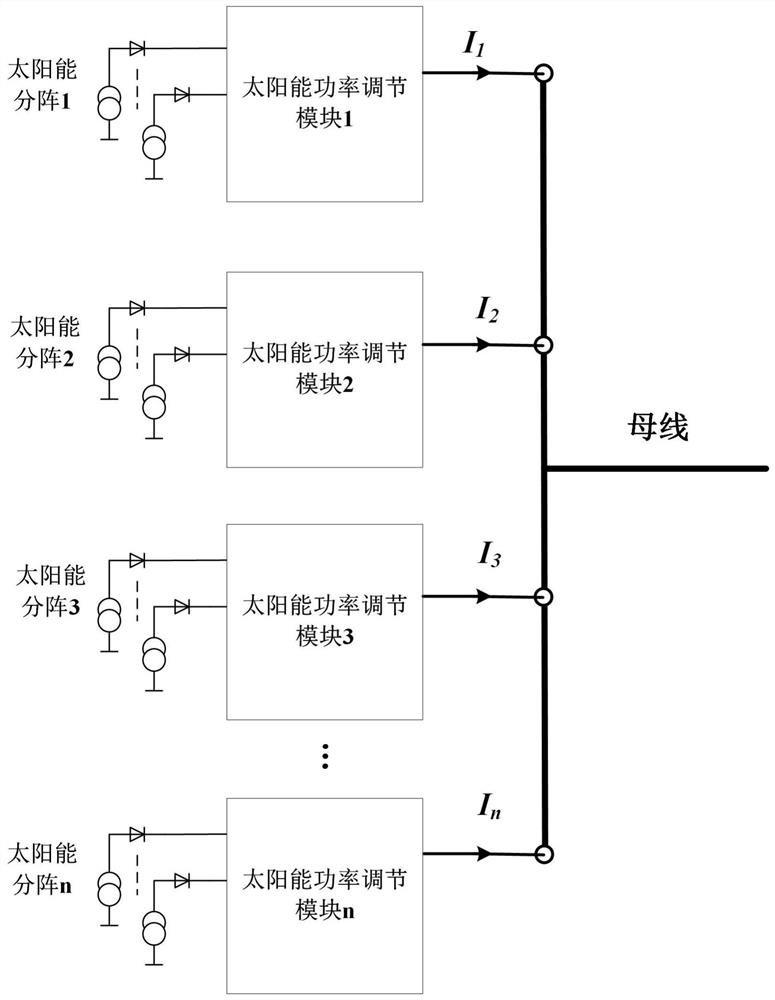A current sharing method for spacecraft solar power regulation modules without current detection
A power regulation and current detection technology, applied in the direction of regulating electrical variables, control/regulating systems, instruments, etc., can solve the problems of complex circuit, high cost, poor reliability, etc., and achieve the effect of simple current sharing control and low cost
- Summary
- Abstract
- Description
- Claims
- Application Information
AI Technical Summary
Problems solved by technology
Method used
Image
Examples
Embodiment 1
[0028] 1. Overall scheme design
[0029] Such as figure 1 As shown, according to the requirements of the engineering system, n solar power adjustment modules correspond to n solar arrays (solar arrays), and the goal of system design is to control the output current I of n solar power adjustment modules 1 ~ I n consistent, figure 1 It is the structure diagram of spacecraft solar power conditioning modules operating in parallel.
[0030] 2. Design the topology of the solar power conditioning module
[0031] Such as figure 2 As shown, design a solar power regulation module that can boost voltage and voltage. The solar power regulation module adopts Buck-Boost topology. figure 2 It is the topological circuit diagram of the solar power regulation module, and the input-output relationship is shown in the following formula:
[0032]
[0033] in:
[0034] V O is the output voltage;
[0035] V IN is the input voltage;
[0036] D is the duty cycle of the switch tube.
...
PUM
 Login to View More
Login to View More Abstract
Description
Claims
Application Information
 Login to View More
Login to View More - R&D
- Intellectual Property
- Life Sciences
- Materials
- Tech Scout
- Unparalleled Data Quality
- Higher Quality Content
- 60% Fewer Hallucinations
Browse by: Latest US Patents, China's latest patents, Technical Efficacy Thesaurus, Application Domain, Technology Topic, Popular Technical Reports.
© 2025 PatSnap. All rights reserved.Legal|Privacy policy|Modern Slavery Act Transparency Statement|Sitemap|About US| Contact US: help@patsnap.com



